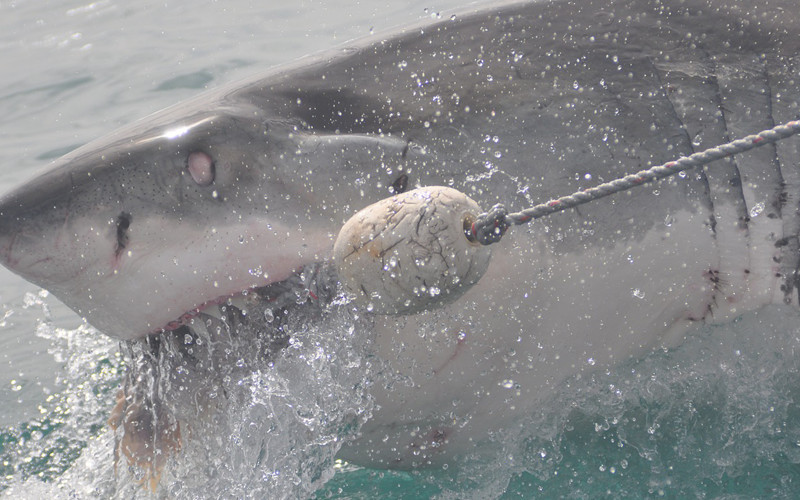Sharks Endangered and Conservation
If you were face-to-face with a shark, what would your reaction be? Do not worry about getting away as fast as possible. Probably the shark will flee from you first.
While it is a truth that some shark species are animals that present a sort of danger to people, it is also true that humans have endangered the preservation of many shark species, despite all the physical and physiological adaptations they have achieved through evolution to survive in their natural environment.
The picture of the status of sharks is not encouraging. There are about 12 species considered dangerous for humans, but about 20 are in danger of extinction. How do you explain this? Their indiscriminate and incidental hunting and the destruction of their habitat are the main factors that caused this situation which, joined with the wrong information that most people know about them, endanger their survival which has exceeded hundred of millions of years.
SAD STANDARDS OF DANGER
In fact, estimations state that about 100 species out of 470 that exist in the world, are in a status of imminent danger to severe. The organization responsible for classifying animal status, including sharks, is the International Union for the Conservation of Nature. From its perspective, all threatened species are under continuous evaluation, and a diagnostic is provided that is an indicator of dangers, causes, and consequences.
The organization has nine categories to classify the status of animals: Not Evaluated, Insufficient Data, Minor Concern, Vulnerable, Near Threatened, Endangered, Critically Endangered, Extinct in the Wild and Extinct. A shark species is considered threatened if the IUCN Red List includes it starting in the Vulnerable status as this category being “less risky” among all the critical levels.
The Near-Threatened category, although it is not an indication of an endangered species, sets a precedent and indicates a potentially endangered species in the future. Vulnerable species face a high risk of extinction in the wild, Endangered species face a very high danger of extinction in their natural habitat and species classified in the Critically Endangered status face an extremely high risk of extinction.
THREATENED SHARKS
Predators, but also prey. According to IUCN analysts, among the approximately 470 species of sharks, 2.4 percent are Critically Endangered, 3.2 percent are Endangered, 10.3 percent are Vulnerable, and 14.4 percent are Near Threatened.
Famous species such as the great white shark (Carcharodon carcharias) and the whale shark (Rhincodon typus) are Vulnerable although the size of the latter and the ferocity of the first are striking. The power of humans over species almost defenseless against them has won.
These are the 25 most threatened species of sharks in the world, classified as Endangered (EN) and Critically Endangered (CR):
Carcharhinus hemiodon. Pondicherry shark. (CR).
Centrophorus harrissoni. Dumb gulper Shark. (CR).
Glyphis gangeticus. Ganges shark. (CR).
Glyphis garricki. Northern river shark. (CR).
Glyphis siamensis. Irrawaddy river shark. (CR).
Haploblepharus kistnasamyi. Natal shyshark. (CR).
Isogomphodon oxyrhynchus. Daggernose shark. (CR).
Mustelus fasciatus. Striped smooth-hound. (CR).
Squatina aculeata. Sawback angelshark. (CR).
Squatina oculata. Smoothback angelshark. (CR).
Squatina squatina. Angelshark. (CR).
Carcharhinus borneensis. Borneo shark. (EN).
Glyphis glyphis. Bizant river shark. (EN).
Hemitriakis leucoperiptera. Whitefin topeshark. (EN).
Holohalaelurus favus. Honeycomb Izak. (EN).
Holohalaelurus punctatus. White-spotted Izak. (EN).
Lamiopsis temminckii. Broadfin shark. (EN).
Mustelus scmitti. Narrownose smooth-hound. (EN).
Sphyrna lewini. Scalloped hammerhead. (EN).
Sphyrna mokarran. Great hammerhead. (EN).
Squatina argentina. Argentine angelshark. (EN).
Squatina Formosa. Taiwan angelshark (EN).
Squatina Guggenheim. Angular angel shark. (EN).
Squatina punctata. Squatina punctata. (EN).
Triakis makulata. Spotted houndshark. (EN).
FUTURE PERSPECTIVES
In the last decades some species populations have decreased up to 90 percent, and some others, up to 70 percent due to anthropogenic causes that kill them directly and indirectly. Disinformation and slow reproduction do not help them to improve the recovery rate of these animals.
Today, sharks face an uncertain future full of risks in a world troubled by environmental problems. If the rate of extinctions increases considerably, in a few years, the seas may be without sharks bringing an enormous amount of environmental consequences with this. Action needs to be taken; there is still time!
Sources:
http://www.iucnredlist.org/
http://sharkopedia.discovery.com/shark-topics/shark-conservation/
http://www.worldwildlife.org/species/shark
https://en.wikipedia.org/wiki/List_of_threatened_sharks
BioExpedition Publishing © 2017.

